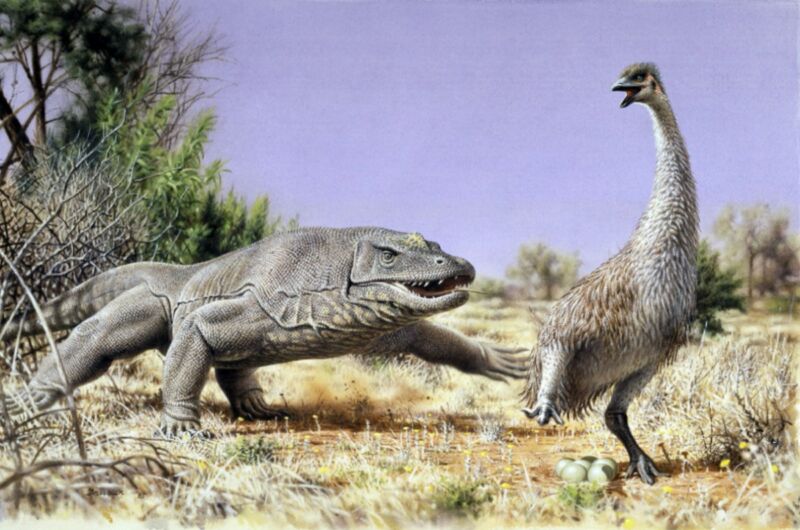Mysterious ancient giant eggs Down Under laid by Aussie “demon ducks of doom”
Ars Technica » Scientific Method 2022-05-27

Enlarge / Detail from an illustration of Genyornis (aka the "Demon Duck of Doom") not looking so tough as it is chased from its nest by a Megalania lizard in prehistoric Australia. (credit: Peter Trusler)
Over 65,000 years ago, large flightless birds dubbed "Demon Ducks of Doom" roamed prehistoric Australia. The creatures stood over six and a half feet (two meters) tall, weighed over 440 pounds (200 kgs), and sported massive beaks. They also produced giant cantaloupe-sized eggs that may have served as a food source for early human inhabitants, eventually contributing to the extinction of the demon ducks, according to a new paper published in the Proceedings of the National Academy of Sciences.
Technically known as Genyornis newtoni or mihirung paringmal ("thunder bird"), the species was first described in 1896 based on the discovery of a fossilized left femur excavated from a site at Lake Callabonna in South Australia. Further excavation yielded many more fragments of avian fossils and eventually mostly complete specimens, including the cranium. Similar specimens have since been found at other sites in New South Wales, Queensland, and Western Australia. The species went extinct within a few thousand years after humans arrived in the region.
There are two competing hypotheses for why Genyronis became extinct: climate change or the impact of the arrival of humans. For instance, there is some fossilized evidence that the Genyornis population at the Lake Callabonna site perished because the lake dried up due to climate change, depriving the birds of their water source. However, a 1999 study of more than 700 eggshell fragments concluded that the species' decline and extinction occurred too rapidly to be attributed to climate change, suggesting that human activity was to blame. Specifically, early humans in the region may have gathered and consumed Genyornis eggs faster than the creatures could lay them and reproduce.